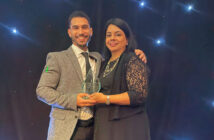Emma Hayes, Managing Director, Digital Built Consultants, shares her vision of what the future for virtual teams in Irish construction could look like in light of compelling research and the impact of COVID-19.
In 2016, I carried out a research study with Dr Noha Saleeb of Middlesex University in London to understand how globally dispersed teams could effectively collaborate and communicate on projects.
This research has never been more relevant than in the current situation where project teams that don’t need to be onsite or co-located to carry out their work are advised to work from home.
The research considered the global architecture, engineering and construction (AEC) industry trend towards the use of globally dispersed teams to achieve quality services at competitive costs.
Some organisations call this multi-office execution where a project team shares work with low-cost design centres for projects based out of high-cost offices. The teams collaborate and communicate using virtual methods such as sharing information over a common data environment and meeting virtually using Voice over IP (VoIP) and screen-sharing collaboration platforms such as MS Teams and Zoom.
The research discovered that in order to work effectively across multiple remote teams in different office locations the following factors need to be considered: team collaboration, traditional and virtual communication methods and types of team players.
BIM and collaboration
According to the research, design team collaboration is achieved through a group of multi-discipline skilled individuals with varying values, attitudes and goals working together to deliver a project. Teams of individuals or organisations working together can address problems and deliver outcomes not effectively achieved by working alone or in silos.
Digital construction processes such as Building Information Modelling (BIM) where project information is shared amongst the stakeholders using 3D models encourages the design team to collaborate.
Traditionally design teams have used Computer Aided Design technology to develop project information along with traditional communication methods such as face-to-face meetings and email to collaborate throughout the project. The adoption of BIM has advanced this process to provide a new method of communicating digital information about a building in a three-dimensional format.
During the pandemic the need for teams to collaborate and communicate remotely is essential for projects to continue while keeping the individuals socially distant and safe from the spread of COVID-19.
One way for the design team to meet and communicate is virtually, using information technology methods such as instant messaging, videoconferencing, computer-screen sharing, and so on.
Research has found that communication technology is more effective when it is used to supplement rather than replace face-to-face interaction. Yet due to the pandemic teams may never meet face to face throughout the project lifecycle. Therefore, it may be necessary to consider alternative methods of virtual communication to simulate the spontaneous face-to-face interaction we’re more used to experiencing.
Introducing avatars
Science fiction films such as ‘The Matrix’ and ‘Avatar’ have depicted virtual environments where people can plug in and interact with each other virtually. The people in these environments take on humanoid features and communicate simultaneously with each other.
The computer gaming industry has been using avatars as first-person representations since ‘Maze War’ in 1973 and more recently with massively multiplayer online role-playing games (MMORPG). ‘World of Warcraft’, one of the most popular MMORPG’s in recent years, allows the players to select and customise a character (avatar) to work collaboratively with other characters in guilds (teams) to complete tasks and defeat opponents.
This collaborative working is supported by internal chat systems where the players can communicate through private chat or guild chat where they can communicate as a group. Gamers also utilise communications systems or VoIP software to communicate with other gamers online.
Technology advancements such as brain-computer interfaces will make this interaction more spontaneous. This is in addition to the presence of immersion using virtual reality, superimposition of virtual objects in real environments using augmented reality and mixed reality using a combination of both.
Ability to adapt
An important factor to consider when adopting virtual communication methods is the ability of the design team to adapt to new ways of communicating.
A barrier to interactive communication and open collaboration with BIM projects may be the lack of engagement by the project team with the tools and processes. For the design team to interrogate and interact with a project’s digital information they must be familiar with the digital tools such as BIM authoring software and review software.
Design teams can comprise of different dynamics, work cultures and levels of experience. The senior team members could be more mature and experienced; the less experienced team members could be less mature, newly graduated, however, more technically savvy. This dynamic may have an impact on how the team engages with the digital tools in a BIM project.
Younger team members who are digital natives are more suited to the BIM process, which entails handling project information contained in a virtual environment accessed at any time as a graphic representation of the building.
The opposite of this may be said of the more mature team members (sometimes referred to as ‘digital immigrants’) who have not grown up immersed in digital technology. The mature team members may retain habits from a non-digital past such as printing documents to read rather than reading on screen or requesting prints of drawings to review rather than utilising digital review tools.
To encourage interactive communication and open collaboration with BIM projects the team needs to engage virtually rather than in a traditional synchronous or asynchronous form, which involves a changing of mindset for the more mature team members.
Research relevance
The objective of the 2016 research was to explore the virtual relationship between members of a design team using BIM processes, understand the difference between collaboration and communication and the challenges of virtual communication between the people involved. This was carried out with case study research along with industry expert interviews and finally experimentation of a proposed solution.
The case study was selected for research as it involved a multi-disciplinary team co-located in three geographic locations where the team members interacted and communicated virtually throughout the project lifecycle and used BIM processes. Clash resolution meetings were carried out virtually with a unified communication platform with VoIP and desktop sharing.
Further research tested the premise that more efficient methods for virtual communication can add value in the workplace between project teams. A traditional face-to-face project collaboration meeting was compared with a project collaboration meeting using a Collaborative Virtual Environment (CVE) solution to carry out the same series of tasks.
Replicating face-to-face
Comparing the results of the research theorised how each demographic responded to different communication/collaboration methods. The field experiments tested whether a virtual environment with avatars for interaction could result in better communication and collaboration through an improved virtual communication environment.
Findings from the evaluations showed a discrepancy between the opinions of the more senior members of the team (digital immigrants) and the younger members (digital natives) who favored CVEs for collaboration and trust.
There were various reasons for the unfavourable results cited by the digital immigrants such as the technology was not responsive enough, it was difficult to view a model on a screen in the virtual environment or lack of experience in the medium.
However, overall the respondents supported this type of technology for future use in terms of being closer to replicating face-to-face interaction than current virtual solutions.
Tomorrow’s world
The future of this type of collaborative environment may result in the ability to attend a virtual site meeting in a BIM model with avatars of the team members walking down the site and interacting spontaneously to resolve issues with the building design before it is built.
It is clear that this global pandemic is very disruptive to our industry. I believe it is escalating the adoption of digital construction processes in particular remote collaborative working.
The implementation of collaborative virtual environments may help to improve the communication and collaboration experience for the project teams. The long-term benefit that this may have for the industry is that remote or virtual teams will become more normal.
As the Irish construction industry competes in a global economy to deliver building projects faster and at a more competitive cost, project teams will be able to utilise geographically dispersed teams with different expertise or from low cost centres throughout their network to collaborate on a project.
This article first appeared in Irish building magazine.
The content of this site is subject to copyright laws and may not be reproduced in any form without the prior consent of the publishers. The views expressed in articles do not necessarily represent those of the publishers.




